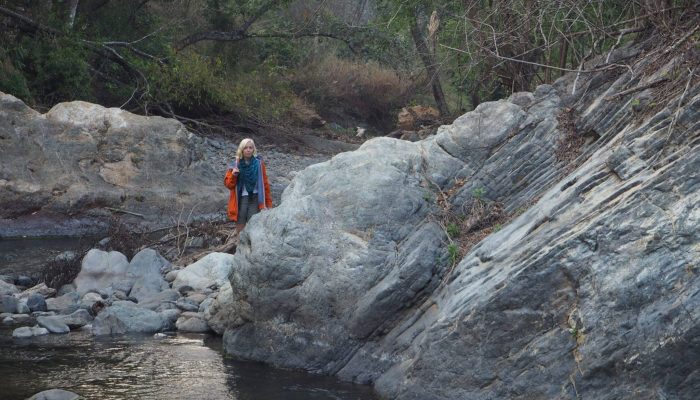
This edition of Minds over Methods article is written by Sarah Kachovich and discusses how tiny fossils can be used to address large scale tectonic questions. During her PhD at the University of Brisbane, Australia, she used radiolarian biostratigraphy to provide temporal constraints on the tectonic evolution of the Himalayan region – onshore and offshore on board IODP Expedition 362. Sarah explains why microfossils are so useful and how their assemblages can be used to understand the history of the Himalayas. And how are new technologies improving our understanding of microfossils, thus advancing them as a dating method?
Linking microfossils to tectonics

Credit: Sarah Kachovich
Sarah Kachovich, Postdoctoral Researcher at the School of Earth and Environmental Sciences, The University of Queensland, Australia.
Radiolarians are single-celled marine organisms that have the ability to fix intricate, siliceous skeletons. This group of organism have captured the attention of artist and geologist alike due to their skeletal diversity and complexity that can be observed in rocks from the Cambrian to the present. As a virtue of their silica skeletons, small size and abundance, radiolarian skeletons can potentially exist in most fine-grained marine deposits as long as their preservation is good. This includes mudstones, hard shales, limestones and cherts. To recover radiolarians from a rock, acid digestion is commonly required. For cherts, 12-24 hours in 5 % hydrofluoric acid is needed to liberate radiolarians. Specimens are collected on a 63 µm sieve and prepared for transmitted light or scanning electron microscope analysis.

Animation of radiolarian diversity. Credit: Sarah Kachovich
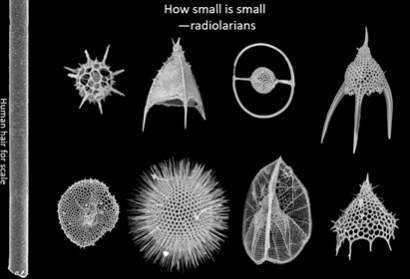
Scale and diversity of modern radiolarians. Credit: Sarah Kachovich (radiolarians from IODP Expedition 362) and Adrianna Rajkumar (hair).
Improving the biostratigraphical potential of radiolarians
The radiolarian form has changed drastically through time and by figuratively “standing on the shoulders of giants”, we correlate forms from well-studied sections to determine an age of an unknown sample. A large effort of my PhD was aimed to progress, previously stagnant, research in radiolarian evolution and systematics in an effort to improve the biostratigraphical potential of spherical radiolarians, especially from the Early Palaeozoic. The end goal of this work is to improve the biostratigraphy method and its utility, thus increasing our understanding of the mountain building processes.
The main problem with older deposits is the typical states of preservation, where radiolarians partly or totally lose their transparency, which makes traditional illustration with simple transmitted light optics difficult. Micro-computed tomography (µ-CT) has been adopted in fields as diverse as the mineralogical, biological, biophysical and anatomical sciences. Although the implementation in palaeontology has been steady, µ-CT has not displaced more traditional imaging methods, despite its often superior performance.

Animation of an Ordovician radiolarian skeleton in 3D imaged through µ-CT. Credit: Sarah Kachovich
To study small complex radiolarian skeletons, you need to mount a single specimen and scan it at the highest resolution of the µ-CT. The µ-CT method is much like a CAT scan in a hospital, where X-rays are imaged at different orientations, then digitally stitched together to reconstruct a 3D model. The vital function of the internal structures provides new insights to early radiolarian morphologies and is a step towards creating a more robust biostratigraphy for radiolarians in the Early Paleozoic.
Linking radiolarian fossils to tectonics
Radiolarian chert is important to Himalayan geologists as it provides a robust tool to better document and interpret the age and consumption of oceanic lithosphere that once intervened India and Asia before their collision.The chert that directly overlies pillow basalt in the ophiolite sequence (remnant oceanic lithosphere) represents the minimum age constraint of its formation. In the Himalayas, over 2000 km of ocean has been consumed as India rifted from Western Australia and migrated north to collide with Asia. Only small slivers of ophiolite and overlying radiolarian cherts are preserved in the suture zone and it is our job to determine how these few ophiolite puzzle pieces fit together.
Another way I have been able to link microfossils to Himalayan tectonics is by studying the history and source of erosion from the Himalayas on board IODP Expedition 362. Sedimentation rates obtained from deep sea drilling can provide ages of various tectonic events related to the India-Asia collision. For example, we were able to date various events such as the collision of the Ninety East Ridge with the Sumatra subduction zone, which chocked off the sediment supply to the Nicobar basin around 2 Ma as the ridge collided with the subduction zone.

Left: Results from the McNeill et al. (2017) of the sedimentation history of Bengal Fan (green dots) and Nicobar Fan (red dots). Middle/right: Reconstruction of India and Asia for the past 9 million years showing the sediment source from the Himalayas to both basins on either side of the Ninety East Ridge.
Lastly, on board Expedition 362 we were able to use microfossils to understand how and why big earthquakes happen. We targeted the incoming sediments to the Sumatra subduction zone that were partly responsible for the globally 3rd largest recorded earthquake (Mw≈9.2). This earthquake occurred in 2004 and produced a tsunami that killed more than 250,000 people.
From the seismic profiles (see example below), we found that the seismic horizon where the pre-decollement formed coincided with a thick layer of biogenetically rich sediment (e.g. radiolarians, sponge spicules, etc.) found whilst drilling. Under the weight of the overlying Nicobar Fan sediments, this critical layer of biogenic silica is undergoing diagenesis and fresh water is being chemically released into the sediments. The fresh water within these sediments is moving into the subduction zone where it has implications to the physical properties of the sediment and the morphology of the forearc region.

The Sumatra subduction zone. The dark orange zone represents the rupture area of the 2004 earthquake. Also shown are the drill sites of IODP Expedition 362 and the location of seismic lines across the plate boundary.

Seismic profile: The fault that develops between the two tectonic plates (the plate boundary fault) forms at the red dotted line. Note the location of the drill site.
References
Hüpers, A., Torres, M. E., Owari, S., McNeill, L. C., Dugan, & Expedition 362 Scientists, 2017. Release of mineral-bound water prior to subduction tied to shallow seismogenic slip. Science, 356: 841–844. doi:10.1126/science.aal3429
McNeill, L. C., Dugan, B., Backman, J., Pickering, K. T., & Expedition 362 Scientists 2017. Understanding Himalayan Erosion and the Significance of the Nicobar Fan. Earth and Planetary Science Letters, 475: 134–142. doi:10.1016/j.epsl.2017.07.019


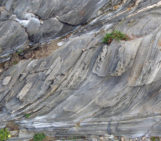
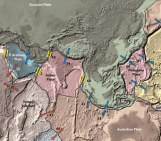
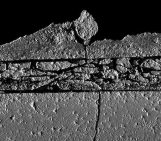
nganga
Radiolarians can interprete the age of oceanic lithosphere. This is wonderful
joe Jarrett
Greetings Sarah
Very good work.
Frustrated about the latency of the general Google posting but that is why are or not subscribing.
Joe Jarrett